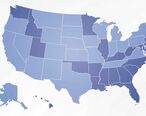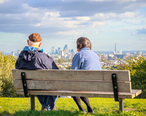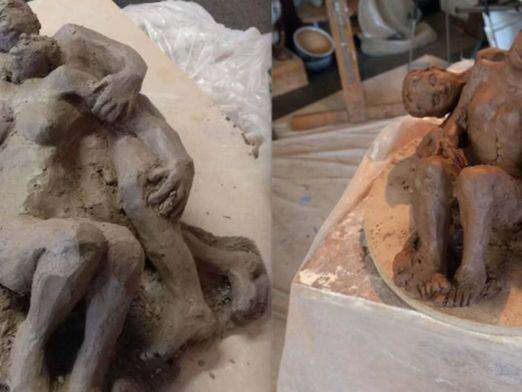Dear Mayor: Reinvent the Neighborhood
If you had a magic wand and could make your city, town, or neighborhood desirable, productive, resilient, transcendent, what would it look like and how would it feel? What is a good place for children, for work, for shopping, for health, for fun, for aging?

Dear Mayor,
If you had a magic wand and could make your city, town, or neighborhood desirable, productive, resilient, transcendent, what would it look like and how would it feel? What is a good place for children, for work, for shopping, for health, for fun, for aging?
What street designs work best? What are the best home layouts? How much of the city’s space is for cars, for transit, for bicycles, for walkers? What type of stalls, stores, cafes, squares make a place special?
Is living in your town affordable, given the prevailing wages? Does it accommodate growth and diversity or is it frozen in place? Does it have the right level of density? How does it fit into its surrounding region?
Although you do not have a magic wand, with Covid-19 what you do have is a once-in-a-generation crisis. A challenge to our cherished assumptions on health, work, community, and personal autonomy. But one that also creates opportunities for lightning fast changes for the better.
First, slow down the streets for your people.
The Mayor of Paris, Anne Hidalgo, is not letting this crisis go to waste. Paris is converting over 400 Miles of the city into walkable and bikeable streets. This is a key short-term move, to safely allow social-distancing, and prevent the return of deadly pollution post lock-down. But it is also an acceleration of a plan originally aimed for completion in 2024. The Mayor has recognized that she can, and should, just flip the switch and get to the future now.
She is not alone. Around the world, over 150 cities have already announced Slow Street or Open Street initiatives with similar aims, as covered in a Google spreadsheet by urban planner Mike Lydon. This includes many American cities, with New York City, Portland (OR), Pasadena (CA), Minneapolis (MN) and Burlington (VT) among the top-10 such efforts as of the time of this writing.
Second, convert your city into an open-air cafe
As we move into the summer months in the Western Hemisphere, mayors are recognizing the necessity and opportunity to give restaurants and cafes maximum space. First out of the gates is Vilnius, Lithuania, with plans to turn its city center into one vast “open-air café”.
Anyone who has had the privilege of sitting in an open-air plaza in Madrid or a piazza in Italy can recognize the social benefits of such initiatives. With the hospitality sector among the worst affected by Covid, this will also prove critical to help cafes and restaurants to be viable again.
We should thus expect a wave of Open-Air Café announcements close on the heels of the Slow Streets wave. It is, of course, much easier to launch Open-Air Café strategies when you have eliminated the pollution and danger of cars, so the leaders in this second wave will likely be the early movers in the first wave.
Third – out of the box thinking
Now is a time to examine many of our prior assumptions. The US was caught unprepared by Covid. However, once the urgency of frequent testing became paramount, the feds and the states rapidly revamped the process. We have seen the number of tests/per day multiply by 8,980 times, from 23 tests on February 22nd to 206,557 on April 30th. Fitting a curve, as below, would suggest that we could be on a path to reach 20 Million tests per day by end of 2020.
Source: Data from Covidtracking.com, curve fitting using power function
Exponential, out of the box thinking, is going to be required across all domains.
Fourth – recognize the duality of a crisis – both need for change and opportunity to change
With Slow Streets and Open Café initiatives, there is both necessity and opportunity. Slow Streets are needed in the short-run but are also an opportunity to accelerate cities into thriving, commerce-rich, vibrant places. Open Café models are also immediately necessary but can likewise evolve into long-term differentiation for those cities that make them permanent.
This duality of necessity and opportunity has a deeper meaning. Recall, for example, that the Chinese characters for “crisis” refer to both danger and opportunity. Consider, also, that the Dao’s yin and yang similarly reflect a duality between positive and negative, motion and stillness, order and chaos. Western expressions, such as “for every cloud there is a silver lining” or “the darkest hour is just before the dawn”, capture the same idea.
The point is that a crisis is not like a normal time. Time collapses in a crisis, the impossible is routine, the unbelievable becomes fact. The old narrative breaks down (“we could not possibly reduce car traffic into our cities”) and is replaced by new facts on the ground (“streets are now reclaimed to safely allow all generations to walk and bike”).
In a crisis, in this crisis, our minds and our societies are searching for a new narrative. As Mayor, you must recognize that the window of time to shape this narrative will be short, and the consequences of your actions will ring across many generations. You need to surround yourself with pioneers and free thinkers. You should eschew conformists and disciples of the old certainties. You need practical people and analysts, but you also need storytellers, because the narrative often precedes the reality. Paris has not yet implemented its plan, neither has Vilnius, but the stories have been written and they will shape the reality. Steve Jobs, among the greatest impresarios of our time, understood the need to tell a good story, and to then ensure that the reality would eventually catch-up.
Thus, even while executing tactical moves such as Slow Streets and Open Café, you should reflect more broadly on further dualities. What are some other areas of necessity/opportunity, of yin/yang? How can you crystallize these into a new narrative, and then a new reality.
Fifth, write a crisis punch-list
Let us not over-think this. You do not need a strategic plan. Perhaps best to start with a punch-list of yin-yang situations, to then make some game changing moves. Thing big but be smart and nimble. Be prepared to copy other Mayors, but back-test with first principles. The Big Idea of a Motor City, first deployed in Detroit in the 1930s, then scaled up across much of the US and later other countries, was flawed.
In this spirit, we could consider the following conflicting dualities:
1. Substantial unemployment, but massive opportunities for new work models.
2. We need social distance, but we also need community.
3. High street commerce has collapsed, but new commercial models could flourish.
4. Housing is in crisis, but housing could create opportunities for individuals and places.
There are many more, but this provides a good start for the next phase. Let us take each in turn:
Sixth, eliminate the barriers to work and maximize the enablers of work (Work First)
Getting your citizens back to work, and attracting newly released Remote workers, are central to the survival of your city. Actions from afar, from the state and the Feds, or from large corporations, will have an impact over which you have little control. What you can control are the many ways in which your city either actively prevents work or fails to encourage work.
Common actions that prevent work (or failures of commission) include:
• Traffic-clogged streets restrict commerce, limiting jobs from stores, cafes, etc
• Zoning limits activity in residential zones, limiting jobs from neighbourhood stores
• Productive downtown buildings are overtaxed, limiting incentives for job formation
• Zoning limits house and street regeneration, thus harming construction jobs
• Overbuilt sprawl crowds out economic activity and hollows out the vital center
• Cities subsidize firms moving in, at the expense of workers and overall taxes
Equally important are the missed opportunities (or failures of omission), including:
• Fail to build suitable housing (low-cost, age-friendly, convenient) to attract families
• Fail to strategically recruit talent to move to your location (focusing on firms instead)
• Fail to make streets child and senior-friendly (and thus four-generational)
• Fail to create vibrant downtowns and neighbourhoods
• Fail to partner with citizens and institutions to promote targeted skill acquisition
• Fail to create spirit of settlement and opportunity, to attract inward migration
• Fail to build an economic model to measure quality of healthy living and lifetime value
• Fail to create an exciting storyline – laying out the purpose and destiny of your city
You should take stock of how friendly your city truly is towards work, and develop a plan to set right those aspects that today are wrong. Make some early, visible, no-brainer moves (Slow Streets and Open Cafes fit nicely into that category). In parallel, develop a roadmap to include progressively more comprehensive moves. We could call this a Work First approach.
Seventh, develop a Talent-Magnet plan
As outlined in my prior letter, The Flipped Workforce and the Future of Anywhere USA, there is an emerging tsunami of talent newly released from the tyranny of the office, the commute and the expensive cost of living in the Megacities. Every week that passes, workers and employers are getting more accustomed to a New Model of Working. Cities have traditionally sought to attract employers and out-of-town chains, giving them tax concessions based on the jobs that they will supposedly bring. Those tax concessions imply higher taxes or fewer services for citizens. Large employers and chains have little loyalty for cities and will just as easily negotiate a similar deal with another city in the future. Outside firms also have few incentives to make the city and its population as productive as possible.
Cities should instead focus their in-migration strategies on talent attraction. Places that attract and grow talent will thrive. In tandem with making your city welcoming, you should develop an outbound campaign to actively recruit talent. Key groups include:
• Diaspora – those with familial or prior work or student ties
• Friends and family – citizens are the best recruiters and can help make newbies welcome
• Summer or second homers – many could be convinced to move permanently
• Interests – target talent whose interests fit with your unique place characteristics
• Multiplier – identify ‘high-multiplier’ talent, whose skills can support job creation
The earlier prescriptions (Slow Streets, Open Café, Work First) will be foundational to talent recruitment. In addition, you could consider among the following moves (many of which are in current use by firms, in their own talent-acquisition strategies):
• Narrative – develop a compelling narrative around your place-based strategy
• Local firms – partner with local firms to help them fill talent needs and manage attrition
• Referral – compensate for successful referrals, based on long-term value creation
• Trial periods – subsidize and smooth the way for incoming talent to drive-test your city
• Publish – use media and PR to publicize your unique selling proposition of place
• Outbound – pursue high-multiplier talent with targeted outbound campaigns
• Friction – ensure that you reduce factors under your control that make moving difficult
• Diversity – you need a range of skills and talents, so it is critical to encourage all sorts
We could collectively refer this to as a “Talent Magnet” approach.
Eight, turn your community into a service.
Our need for community is overwhelming, never more so than in times of uncertainty, and especially with an enemy that makes community a transmission vector. Adapting for disease protocols, those places that can best deliver ‘community—as-a-service’ will tend to be most resilient to the vagaries of health or economic uncertainty. There are long traditions of community formation – everything from group prayer, to pop-up events such as Potlaches or barn-buildings, to civic groups of common interests. Harnessing the potential of the community to attract talent is critical, especially for those who have the weakest links to your city. Among the top reasons for talent to stay anchored in a sub-optimal location is the fear of being adrift in a new place.
Develop a ‘Community-as-a-service’ approach.
Nine, work to re-kindle your city’s commerce.
Close on the heels of community formation comes commercial activity. We are going through one of the fastest shifts ever in the locus and nature of work. It is a moment for every business and institution to re-assess their prior assumptions. A doctor’s office could take advantage of telemedicine, a school could become both consumer and producer of virtual learning, a local university could become a four-generational learning institution, an old mill could be reinterpreted as a 3D-manufacturing center, a café downtown could evolve into a local co-working center to complement work-from-home, a museum or theatre could build a virtual following, a mall could be re-interpreted as a neighbourhood, a street could become an open-air mall, parking lots could meld into gardens, senior living could become multi-generational housing, a farm can become a re-wilding destination, a school building can produce precision fermentation, and so on. The shifts in demand and supply are hard to fathom, but the potential opportunities are endless. If you, working with civic leaders of all kinds, take the initiative in asking ‘what-if’, you will be surprised and pleased by the wave of ideas that emerge.
Ten, unleash the power of homestead.
All will be for nought if housing does not work for your city. Housing stock is generally old, expensive, hard to maintain, designed for a different era. Your citizens often end up working for their home (spending a very high proportion of monthly income to maintain a roof over their heads), rather than having their home work for them. Zoning prevents the natural evolution of homes and neighborhouds, breaking patterns in the evolution of cities that go back thousands of years. The prevailing American model is the sub-urb, but as Chuck Marohn from Strongtowns.org has written recently, the great sub-urban experiment of the past 70 years is coming to an end. This does not mean the end of suburbs, but a new interpretation focused on community-oriented neighborhoods; slow streets and open cafes; seamless weaving of work, life and play; incremental development around form-based codes instead of antiquated zoning; and the conception of housing-as-a-service (HaaS).
What HaaS means is that your city designs, builds, manages and operates housing to serve the needs of talent and their related communities to accomplish their distinct purposes. If the best model for a citizen or family is a mini-apartment at low rent and minimal service, make this available, but ensure it is of the highest reasonable quality; if they only need housing for a portion of their time, make it so; if they need housing adapted to specific needs, deliver it.
 Dominic Endicott is currently in the process of setting up 4Gen Ventures, a Venture capital firm out of London/Boston focused on the global opportunity from this macro-trend. At Nauta Capital, he led the first VC investment in Great Call, a US-based firm oriented around technology for older customers and care-givers. Great Call grew from $1M revenue at investment to around a $300M revenue run-rate, and was acquired by Best Buy in 2018 for $800M.
Dominic Endicott is currently in the process of setting up 4Gen Ventures, a Venture capital firm out of London/Boston focused on the global opportunity from this macro-trend. At Nauta Capital, he led the first VC investment in Great Call, a US-based firm oriented around technology for older customers and care-givers. Great Call grew from $1M revenue at investment to around a $300M revenue run-rate, and was acquired by Best Buy in 2018 for $800M.














There are no comments for this article yet. Be the first to leave a comment